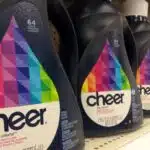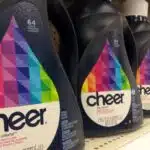As a laundry sanitation expert, it is my duty to inform the public about the importance of disinfecting laundry. Laundry can harbor harmful bacteria and viruses, which can lead to infections and illness. Disinfecting laundry is especially crucial for individuals with weakened immune systems or those who work in healthcare settings.
While bleach is commonly used as a disinfectant for laundry, there are alternative methods that can be just as effective. In this article, I will provide you with tips on how to disinfect laundry with or without bleach. These methods will help ensure that your clothes are clean and safe to wear, giving you peace of mind knowing that you are taking steps towards protecting yourself and those around you.
Understanding The Importance Of Laundry Sanitation
Laundry sanitation is of utmost importance in preventing the spread of harmful bacteria and viruses. Did you know that according to a recent study, one-third of all washing machines contain E. coli bacteria? This statistic alone highlights the importance of laundry hygiene in preventing laundry contamination.
Many people believe that simply washing their clothes with detergent will eliminate all germs and bacteria, but this is not always the case. Harmful pathogens can survive on clothing even after a wash cycle, especially if the water temperature is not hot enough or if the detergent is not strong enough. This is why proper disinfection techniques are necessary to ensure that your laundry is properly sanitized.
Preventing laundry contamination requires a multifaceted approach that includes understanding how to properly handle and sanitize your clothing. By implementing proper laundry sanitation techniques, you can help protect yourself and others from harmful viruses and bacteria that may be lurking in your laundry. In the next section, we will discuss some of the most common harmful bacteria and viruses found in laundry and how to prevent their spread.
Harmful Bacteria And Viruses In Laundry
Understanding the Importance of Laundry Sanitation is crucial in maintaining a healthy and hygienic environment. Common pathogens such as bacteria, viruses, fungi, and parasites can easily thrive in laundry if proper sanitation practices are not followed. To prevent the spread of diseases through contaminated laundry, effective methods must be employed to disinfect both clothing and linens.
Laundry hygiene tips include separating soiled clothes from clean ones, using hot water for washing and drying, avoiding overcrowding of the washing machine or dryer, and ensuring that all laundry products used are suitable for killing germs. Best practices for disinfecting laundry involve the use of bleach or other chemical agents such as hydrogen peroxide or quaternary ammonium compounds. These agents can be added to the wash cycle or used during soaking to kill harmful microorganisms present in laundry.
Harmful Bacteria and Viruses in Laundry cannot be seen with the naked eye; therefore, it is essential to take extra precautions when handling potentially contaminated laundry. Individuals who should disinfect their laundry include those who work in healthcare settings, have weakened immune systems, handle animal waste or bodily fluids regularly, or have been exposed to someone who is ill with an infectious disease. By following proper sanitation practices and employing effective disinfection methods when necessary, we can reduce the risk of spreading harmful pathogens through our laundry.
Who Should Disinfect Their Laundry?
Laundry sanitation is a crucial aspect of maintaining overall cleanliness in the household. However, not everyone needs to disinfect their laundry. Individuals who work in healthcare, laboratories, or any setting that involves handling bodily fluids should prioritize disinfecting their laundry regularly. The benefits of disinfecting laundry outweigh the risks of neglecting laundry sanitation.
The benefits of disinfecting laundry are numerous. Disinfection eliminates harmful bacteria and viruses that may be present on clothing, bedding, and towels. This reduces the risk of infection and cross-contamination within the household. It also helps to maintain the longevity of clothing by reducing the buildup of bacteria that can cause odor and deterioration. Additionally, regular disinfection can help prevent allergic reactions caused by dust mites and other allergens commonly found in fabrics.
On the other hand, neglecting laundry sanitation poses significant risks to individuals’ health and well-being. Bacteria and viruses from soiled clothes can linger on surfaces for days, leading to possible infections among family members and visitors alike. Dirty clothing also creates an unhygienic living environment that increases the risk of respiratory illnesses such as asthma or allergies. Furthermore, neglecting laundry sanitation accelerates fabric wear-and-tear because dirt particles accumulate within fibers over time.
It is important to understand when to disinfect laundry properly. In cases where individuals are exposed to infectious materials due to work or travel, they should disinfect their clothes immediately after returning home. Individuals who have weakened immune systems or suffer from chronic illnesses such as diabetes should also prioritize regular disinfection measures as a preventative measure against potential infections.
When To Disinfect Laundry
Signs of bacterial growth are not always visible to the naked eye, making it important to know when to disinfect your laundry. If you or someone in your household is sick, has a weakened immune system, or has been in contact with someone who is sick, it is recommended to disinfect your laundry. Additionally, if you notice an unusual odor or stains on your clothing that persist after washing, these may be signs of bacterial growth and disinfection may be necessary.
Common disinfectants for laundry include bleach, hydrogen peroxide, and vinegar. Bleach is a powerful disinfectant but can also cause damage to fabrics and should only be used as directed. Hydrogen peroxide is a gentler alternative that can still effectively kill bacteria and viruses. Vinegar is also a natural disinfectant but should not be used on colored fabrics as it can cause fading.
When preparing your laundry for disinfection, it is important to read the label on your chosen disinfectant carefully and follow the instructions for use. Some disinfectants require pre-soaking or specific temperature settings on your washing machine. It may also be helpful to separate heavily soiled items from lightly soiled items to ensure thorough cleaning and disinfection. By taking these steps, you can effectively disinfect your laundry and help keep yourself and those around you healthy.
To prepare your laundry for disinfection, there are certain steps you need to take based on the type of disinfectant you plan on using.
Preparing Your Laundry For Disinfection
- Clothes should be sorted according to their care instructions prior to disinfecting.
- Stains should be pre-treated with a stain remover prior to laundering, as this will help to reduce the risk of cross-contamination.
- An appropriate detergent should be chosen for the type of fabric being laundered and the level of disinfection desired.
- High-efficiency (HE) detergents should be used in front-loading washers to minimize sudsing.
- Bleach should be used on items that are not colorfast and as an antimicrobial agent for disinfecting.
- The laundering process should be completed in accordance with the care instructions for the fabric type to ensure proper disinfection.
Sorting Clothes
Sorting clothes is an essential step in ensuring that laundry is disinfected effectively. The process can be overwhelming, especially when dealing with large piles of clothing. However, it is crucial to adopt sorting techniques to prevent color bleeding and ensure the desired outcome. Sorting clothes involves separating them according to their color, material, level of soiling, and intended wash temperature.
Color coding is a popular method used in sorting laundry. It entails using different colors for different types of laundry. For instance, white clothing should be separated from colored clothing to prevent color bleeding. The use of color-coded baskets or hampers ensures that the sorting process is efficient and straightforward. This method also prevents cross-contamination between clean and dirty laundry.
Additionally, understanding the fabric care label on each garment helps in sorting clothes appropriately. Some fabrics are more delicate than others and require special care during washing. Sorting clothes based on their level of soiling also ensures that heavily soiled garments do not contaminate lightly soiled ones during cleaning. Adopting proper sorting techniques improves the effectiveness of disinfecting laundry while prolonging the lifespan of clothing items through appropriate care.
Pre-Treating Stains
As a laundry sanitation expert, it is essential to emphasize the importance of preparing your laundry adequately before disinfection. One of the crucial steps in this process is pre-treating stains. Pre-treating stains involves using specific techniques to remove stubborn stains that do not come off during regular washing. Common stains such as sweat, blood, grease, and wine can be challenging to eliminate without pre-treatment.
Pre-treating techniques vary depending on the type of stain and fabric material. For instance, for protein-based stains such as blood and sweat, soaking the garment in cold water before washing can help loosen the stain’s grip on the fabric. For oil-based stains like grease and makeup, using a solvent-based stain remover can help dissolve the oil before washing with detergent. It is crucial to follow instructions on each product’s label when using pre-treaters to avoid damaging your clothes.
In addition to pre-treating stains, it is also essential to identify them before washing. Inspecting your clothes for stains before placing them in the wash ensures that you apply appropriate treatment options. This step may seem tedious, but it saves time and effort in the long run and ensures that your clothes come out clean after disinfection. By adopting proper pre-treatment techniques and identifying common stains on clothing items, you improve their lifespan while keeping them clean and disinfected effectively.
Choosing Detergent
As a laundry sanitation expert, preparing your laundry adequately before disinfection is crucial. One of the essential steps in this process is choosing the right detergent for your clothes. Choosing detergent can be overwhelming with various options available, including liquid, powder, pods, and eco-friendly alternatives. However, selecting the right one can make a significant difference in how effectively your clothes are disinfected.
When choosing detergent for laundry sanitization techniques, it is essential to consider several factors such as fabric type, water hardness level, and cleaning power. For instance, liquid detergents are ideal for cold water washes and delicate fabrics as they dissolve quickly and do not leave residues on clothes. On the other hand, powder detergents are better suited for hard water environments as they contain more surfactants that help remove mineral deposits from clothes.
Furthermore, high-efficiency (HE) detergents are formulated to work with front-loading washing machines that use less water than traditional top-loading machines. HE detergents produce fewer suds and have low-water content to prevent damaging the machine’s motor. Ultimately, by selecting the appropriate detergent for your laundry sanitization techniques based on your unique needs and preferences, you improve the effectiveness of your disinfection efforts while keeping your clothes clean and fresh.
Disinfecting Laundry With Bleach
Bleach is a powerful disinfectant that can be used to sanitize laundry effectively. However, it is important to weigh the pros and cons of using bleach before incorporating it into your laundry routine. One of the biggest advantages of bleach is its ability to kill a wide range of bacteria, viruses, and fungi, including those that cause illnesses like E.coli and influenza. Additionally, bleach can help remove tough stains and brighten whites.
On the other hand, there are also some drawbacks to using bleach in your laundry. For one, it can be harsh on fabrics over time, causing them to wear out faster than they would otherwise. Additionally, if not used properly or in the correct concentration, bleach can damage colors and even make stains worse. Finally, some people may be sensitive or allergic to bleach and experience skin irritation or respiratory problems when exposed.
If you’re looking for an alternative to bleach for disinfecting laundry, there are several options available. One is hydrogen peroxide, which is less harsh than bleach but still effective at killing germs. Another option is vinegar or citric acid-based cleaners like Borax or washing soda. These products won’t necessarily kill germs outright but can help remove dirt and grime from clothing while also freshening them up.
Understanding the risks of using bleach is important before incorporating it into your laundry routine. While it can be an effective disinfectant when used properly, there are also drawbacks to consider. By weighing the pros and cons of using bleach versus other alternatives, you can make an informed decision about what’s best for your needs.
Understanding The Risks Of Using Bleach
Understanding the risks of using bleach is crucial in maintaining a safe and healthy home environment. While it is an effective disinfectant, bleach can also be harmful when not used properly. Exposure to bleach fumes can cause respiratory problems, and its corrosive properties can damage fabrics and surfaces over time.
Proper bleach usage for laundry disinfection involves diluting the solution according to instructions, as using too much bleach can lead to discoloration and damage to clothes. Additionally, it is essential to ensure that the laundry machine is thoroughly rinsed after use to avoid any leftover bleach residue that may come into contact with skin or other fabrics.
To minimize the risks associated with using bleach for laundry disinfection, consider these helpful tips:
- Wear gloves and a face mask when handling bleach
- Use only the amount of bleach recommended on the label
- Avoid mixing bleach with other cleaning products
- Make sure there is proper ventilation in the room where you are using bleach
- Store bleach in a secure location away from children and pets
By following these guidelines, you can safely utilize bleach as a powerful disinfectant for your laundry needs while minimizing its potential hazards. However, if you prefer an alternative method of laundry disinfection without using harsh chemicals like chlorine-based bleaches, there are several options available that we will explore in the next section.
Transition: Now that we have discussed proper usage and safety tips for utilizing chlorine-based bleaches for laundry disinfection let’s explore some alternatives that can achieve similar results without exposing you or your family to toxic chemicals.
Alternatives To Bleach For Laundry Disinfection
- Vinegar can be used to disinfect laundry as it is a natural disinfectant and deodorizer.
- Essential oils, such as tea tree oil, are often used as a natural disinfectant and have anti-bacterial properties.
- Hydrogen peroxide is a common alternative to bleach for laundry disinfection and is often used as an anti-bacterial agent.
- Baking soda is also effective in disinfecting laundry and can be used in combination with other agents such as lemon juice to boost its effectiveness.
- Borax is an effective laundry disinfectant and is often used in combination with other agents such as hydrogen peroxide.
- Lemon juice is a natural disinfectant and deodorizer and can be used in combination with other agents to boost its effectiveness in disinfecting laundry.
Vinegar
As a laundry sanitation expert, I understand that some individuals may not prefer using bleach for disinfecting their laundry due to its harmful properties. Fortunately, there are viable alternatives available that can effectively kill germs and bacteria, such as vinegar.
Vinegar is a popular alternative to bleach for laundry disinfection due to its natural properties. Vinegar contains acetic acid, which has antimicrobial properties and can effectively eliminate germs and bacteria found on clothing items. Additionally, vinegar is an affordable option and readily available in most households.
While vinegar may not be as potent as bleach, it’s still an effective alternative for disinfecting clothes. To use vinegar in your laundry routine, mix one cup of white distilled vinegar with water before adding it to the washing machine during the rinse cycle. This will help remove any lingering odors and bacteria from your clothes while also leaving them feeling soft and fresh.
In conclusion, when it comes to disinfecting your laundry without using bleach, vinegar is a great alternative due to its effectiveness in killing germs and affordability. By incorporating this simple step into your laundry routine, you can help protect yourself and others against harmful bacteria while also achieving clean and fresh-smelling clothes.
Essential Oils
Moving away from bleach for laundry disinfection is a wise decision, especially when considering the harmful effects it may have on one’s health and the environment. Fortunately, there are several viable alternatives available that can effectively kill germs and bacteria. One such alternative is the use of essential oils.
DIY essential oil blends have become increasingly popular in recent years, especially with their benefits in aromatherapy. Essential oils contain natural properties that can help eliminate germs and bacteria found on clothing items while leaving them smelling fresh. Additionally, using essential oils in laundry disinfection promotes relaxation and reduces stress, which can be beneficial to an individual’s overall well-being.
When using essential oils for laundry disinfection, it’s important to note that they should not be used directly on clothing as they may leave stains or cause skin irritation. Instead, add a few drops of your chosen essential oil to wool dryer balls or a damp cloth before adding them to the dryer. Alternatively, add a few drops of essential oil to white distilled vinegar during the rinse cycle in place of fabric softener. This method will not only disinfect your clothes but also leave them smelling amazing without any harsh chemicals or synthetic fragrances.
In conclusion, incorporating essential oils into your laundry routine is an effective alternative to bleach for disinfecting clothes while promoting relaxation and reducing stress through aromatherapy benefits. By following simple steps like adding a few drops of your favorite essential oil to wool dryer balls or white distilled vinegar during the rinse cycle, you can achieve clean and fresh-smelling clothes without harming your health or the environment.
Hydrogen Peroxide
Another effective alternative to bleach for laundry disinfection is hydrogen peroxide. Hydrogen peroxide is a common household disinfectant that can kill bacteria, viruses, and fungi effectively. It is a colorless liquid that is odorless, making it a suitable option for people who are sensitive to strong chemical smells. Using hydrogen peroxide for laundry disinfection not only eliminates germs and bacteria but also helps to remove tough stains like blood, sweat, and grass.
Apart from its use in laundry disinfection, hydrogen peroxide has several other benefits. It can be used as an antiseptic mouthwash and toothpaste when diluted with water, helping to kill harmful bacteria in the mouth while promoting oral hygiene. Additionally, it can be used as a surface cleaner as well; just dilute it with water before use.
When using hydrogen peroxide for laundry disinfection, add half a cup of 3% hydrogen peroxide to the rinse cycle in place of fabric softener. This method will effectively kill germs and bacteria while leaving your clothes smelling fresh and clean without any harsh chemicals or synthetic fragrances. However, avoid using hydrogen peroxide on dark-colored clothing as it may cause color fading or discoloration over time.
In summary, using hydrogen peroxide for laundry disinfection is an effective alternative to bleach that not only kills germs and bacteria but also promotes oral hygiene when diluted with water. By adding half a cup of 3% hydrogen peroxide to the rinse cycle during laundry, you can achieve clean and fresh-smelling clothes without harming your health or the environment.
Using Hydrogen Peroxide For Laundry Disinfection
Are you looking for an effective way to disinfect your laundry without using bleach? Hydrogen peroxide is a popular alternative that can provide powerful results. Hydrogen peroxide laundry is a DIY disinfection method that can kill bacteria and viruses, making it ideal for those who want to sanitize their clothes at home.
To use hydrogen peroxide for laundry disinfection, simply add half a cup or more of 3% hydrogen peroxide to your washing machine during the rinse cycle. Alternatively, you can mix one part hydrogen peroxide with one part water and spray the solution onto your clothes before washing. This method is especially useful for items that cannot be washed in hot water, such as delicate fabrics or shoes.
One of the benefits of using hydrogen peroxide instead of bleach is that it is less harsh on fabrics and colors. It can also help remove stains and brighten whites. However, it’s important to note that hydrogen peroxide should not be used on colored clothing or dark fabrics as it may cause discoloration. With proper use, hydrogen peroxide laundry can be a safe and effective way to disinfect your clothes at home.
If you prefer a more natural approach to disinfecting your laundry, vinegar may be another option worth considering. Read on to learn about the benefits of using vinegar for laundry disinfection.
Disinfecting Laundry With Vinegar
As a laundry sanitation expert, one of the most effective ways to disinfect laundry without bleach is by using vinegar. Vinegar is a natural and safe alternative that has been used for centuries to clean and sanitize various surfaces. It contains acetic acid, which helps to kill bacteria, viruses, and fungi that may be present in your clothes.
Vinegar benefits are numerous when it comes to sanitizing your laundry. Firstly, it is an excellent deodorizer that can remove unpleasant smells from your clothes. Secondly, vinegar is a great whitener that can help brighten dull or discolored fabrics. Thirdly, it is gentle on fabrics and can be used on delicate materials such as wool or silk without causing any damage.
However, there are some precautions you should take when using vinegar for laundry disinfection. First and foremost, never mix vinegar with bleach or ammonia as this can create toxic fumes that are harmful to your health. Also, avoid using vinegar on certain fabrics like acetate or rayon as they may dissolve or shrink when exposed to acidic substances like vinegar. Lastly, always dilute the vinegar before use as undiluted vinegar may cause discoloration or damage to your clothes.
Moving forward into the next section about the benefits of using vinegar for laundry disinfection, it’s important to note that not only is it effective in killing germs but it’s also an eco-friendly alternative to harsh chemicals commonly found in traditional cleaning products. Additionally, it’s cost-effective and readily available at most grocery stores making it an accessible option for those looking to maintain a clean and healthy home environment.
Benefits Of Using Vinegar For Laundry Disinfection
Disinfecting laundry is an important step in ensuring that your clothes, towels, and linens are free from germs and bacteria. While bleach has long been the go-to disinfectant for laundry, vinegar is emerging as a popular alternative due to its many benefits. In this section, we will discuss the effectiveness of vinegar compared to bleach and the benefits of using vinegar for laundry disinfection.
Vinegar vs Bleach: Bleach is a powerful disinfectant that can kill a wide range of germs and bacteria. However, it also has some drawbacks. Bleach can damage fabrics over time, which can lead to yellowing and weakening of fibers. Additionally, if not used properly, bleach can be dangerous to handle and can release harmful fumes into the air. On the other hand, vinegar is a natural disinfectant that is safe to use on most fabrics. It works by changing the pH level of your laundry water, which makes it difficult for bacteria and germs to survive.
Effectiveness of Vinegar: Studies have shown that vinegar is an effective disinfectant for laundry when used correctly. It has been found to kill 99% of bacteria, viruses, and mold spores on clothes and linens. Unlike bleach, vinegar does not damage fabrics or release harmful fumes into the air. This makes it a safer option for households with children or pets.
Benefits of Using Vinegar for Laundry Disinfection: Aside from being safe and effective, there are many other benefits to using vinegar for laundry disinfection. Vinegar is inexpensive and readily available at most grocery stores. It can also help remove stains and odors from your clothes without the need for harsh chemicals or additives. Additionally, vinegar is eco-friendly and biodegradable, making it a great choice for those looking to reduce their environmental impact.
Overall, while bleach may seem like the obvious choice for laundry disinfection, vinegar is a safe and effective alternative that offers many benefits. By using vinegar in your laundry routine, you can ensure that your clothes and linens are free from germs and bacteria without the risk of damaging fabrics or releasing harmful fumes into the air. In the next section, we will discuss another natural alternative to bleach: using essential oils for laundry disinfection.
Using Essential Oils For Laundry Disinfection
- Essential oils have been used for centuries for their powerful disinfectant and antibacterial properties, making them a beneficial addition to any laundry sanitation routine.
- Essential oils can be used in a variety of ways to disinfect laundry, either directly in the machine, as part of a laundry detergent, or in a pre-treatment spray.
- Typical essential oils used for laundry disinfection include tea tree, lemon, eucalyptus, and lavender, each of which have unique properties that can help to kill germs and bacteria on garments.
- Other natural substances like white vinegar, baking soda, and hydrogen peroxide can also be used in combination with essential oils, to further enhance the disinfection process.
Benefits Of Essential Oils
Laundry disinfection is an essential step in maintaining the cleanliness of clothes and linens. Essential oils are becoming increasingly popular as an alternative to bleach for laundry disinfection. Essential oil blends can be used alone or in DIY disinfectant recipes to kill bacteria, viruses, and fungi on clothes and linens.
One benefit of using essential oils for laundry disinfection is that they are natural and non-toxic. Unlike bleach, which can irritate the skin, eyes, and respiratory system, essential oils are safe for people and pets. Additionally, essential oils have a pleasant scent that can leave clothes smelling fresh and clean.
Another benefit of using essential oils for laundry disinfection is that they have antimicrobial properties. Many essential oils contain compounds that can kill or inhibit the growth of bacteria, viruses, and fungi. Some of the most effective essential oils for laundry disinfection include tea tree oil, lavender oil, eucalyptus oil, peppermint oil, and lemon oil. These oils can be added to the washing machine or used in DIY disinfectant recipes to kill germs on clothes and linens.
In conclusion, essential oils offer many benefits for laundry disinfection. They are natural, non-toxic, have a pleasant scent, and have antimicrobial properties that can kill bacteria, viruses, and fungi. Essential oil blends or DIY disinfectant recipes can be used as an alternative to bleach for those who prefer a more natural approach to cleaning their clothes and linens. By incorporating essential oils into your laundry routine, you can ensure that your clothes are not only clean but also free from harmful germs.
Types Of Essential Oils For Laundry Disinfection
When it comes to using essential oils for laundry disinfection, there are several types of oils that are particularly effective. Two of the most popular essential oils for this purpose are lavender and tea tree oil. Lavender oil has been shown to have antimicrobial properties that can help kill germs on clothes and linens, while tea tree oil is known for its ability to fight bacteria, viruses, and fungi.
Another pair of essential oils that are commonly used for laundry disinfection are eucalyptus and lemon oil. Eucalyptus oil contains compounds like cineole and alpha-terpineol that have been shown to have antibacterial properties. Lemon oil, on the other hand, is a natural deodorizer and can help eliminate unpleasant odors from clothing.
To use essential oils for laundry disinfection, there are a few different methods you can try. One option is to add a few drops of your chosen essential oil directly to the washing machine during the rinse cycle. Another option is to create a DIY disinfectant spray by mixing water, vinegar, and a few drops of your preferred essential oil in a spray bottle. This can be used to mist clothing or linens before washing or as a spot treatment on areas that need extra attention.
By incorporating different types of essential oils into your laundry routine, you can ensure that your clothes and linens are not only clean but also free from harmful germs. Whether you prefer lavender or tea tree oil, eucalyptus or lemon oil, there’s an essential oil out there that can meet your needs when it comes to laundry disinfection.
Tips For Preventing Laundry Contamination
Preventive measures are key in avoiding laundry contamination. One of the most important steps is to always separate contaminated laundry from clean laundry. This includes separating items that have been exposed to bodily fluids, such as blood or vomit, and items that have been worn in public spaces, such as hospitals or gyms. Additionally, it is crucial to wash your hands thoroughly before and after handling dirty laundry.
Common contaminants found in laundry include bacteria, viruses, and fungi. These microorganisms can cause illnesses such as respiratory infections, skin infections, and gastrointestinal illnesses. It is important to take extra precautions when dealing with contaminated laundry to prevent the spread of these illnesses.
To further prevent laundry contamination, it is recommended to use hot water when washing items that have come into contact with bodily fluids or other contaminants. Hot water can help kill any remaining microorganisms on the fabric. It is also important to regularly clean and disinfect your washing machine to prevent cross-contamination between loads of laundry. By following these preventive measures, you can help keep yourself and those around you healthy and safe from laundry-related illnesses.
Transition: While preventive measures are a crucial aspect of laundry sanitation, sometimes they may not be enough on their own. In the next section, we will discuss best practices for disinfecting laundry with or without bleach.
Best Practices For Disinfecting Laundry
To ensure that your laundry is properly disinfected, it is important to follow best practices for laundry sanitation. Whether you are using bleach or other laundry sanitizer products, there are certain steps that should be taken to effectively kill germs and bacteria on your clothing and linens.
Firstly, it is critical to use hot water when washing your clothes. Hot water helps to kill bacteria and viruses that may be present in your laundry. It is recommended to wash your clothes at a temperature of 140°F or higher for maximum disinfection.
Secondly, if you choose to use bleach as a disinfectant, make sure to carefully read the instructions on the label. Bleach can be effective in killing germs, but it must be used correctly to avoid damaging your clothing or causing harm to yourself. Always dilute bleach before adding it to your laundry and never mix bleach with any other chemicals.
Lastly, there are many laundry sanitizer products available on the market that can help to effectively disinfect your clothes. These products usually contain active ingredients such as hydrogen peroxide or quaternary ammonium compounds that work by breaking down the cell walls of bacteria and viruses.
- Use hot water at a temperature of 140°F or higher for maximum disinfection.
- Carefully read instructions on bleach labels before using.
- Dilute bleach before adding it to your laundry.
- Never mix bleach with any other chemicals.
- Consider using laundry sanitizer products containing active ingredients like hydrogen peroxide or quaternary ammonium compounds.
By following these best practices for disinfecting laundry, you can help protect yourself and others from harmful germs and bacteria. Remember that proper hygiene starts with clean clothes and linens. In the next section, we will discuss how these practices can contribute to protecting your health and safety through proper laundry disinfection.
Conclusion: Protecting Your Health And Safety With Proper Laundry Disinfection
Proper laundry disinfection is a critical aspect of maintaining good hygiene and preventing the spread of infectious diseases. When done correctly, it can effectively eliminate harmful microorganisms that may be present in clothes, linens, or other fabrics. One of the benefits of proper disinfection is that it can help protect your health and safety by reducing the risk of infection.
However, there are some common misconceptions about laundry sanitation that can lead to ineffective or even harmful practices. For example, many people believe that using hot water alone is sufficient for disinfecting laundry. While hot water can help kill some germs, it may not be enough to eliminate all types of bacteria and viruses. Additionally, some people may rely solely on bleach for disinfection, which can damage fabrics and may not be suitable for certain materials.
To ensure proper disinfection of laundry, it’s important to follow recommended guidelines and use appropriate cleaning agents. This may include using hot water (at least 140°F) with detergent and/or an EPA-approved disinfectant product. It’s also important to consider factors such as fabric type and color when selecting cleaning products and methods.
In summary, proper laundry disinfection is essential for maintaining good hygiene and reducing the risk of infection. By understanding the benefits of proper disinfection and avoiding common misconceptions, you can ensure that your laundry is properly sanitized and safe for use. Remember to always follow recommended guidelines and seek professional advice if you have any questions or concerns about laundry sanitation practices.
Conclusion
The importance of laundry sanitation cannot be overstated. Harmful bacteria and viruses can survive on clothing and linens, posing a risk to your health and safety. Disinfecting laundry is especially important for those with weakened immune systems or who have been in contact with potentially infectious materials.
To properly disinfect laundry, it is essential to understand when and how to do so. Before beginning the process, take steps to prevent contamination, such as washing your hands frequently and separating dirty clothes from clean ones. Essential oils can also be used in the laundry to add an extra layer of disinfection.
When disinfecting laundry, there are best practices that must be followed to ensure proper sanitation. This includes using hot water and appropriate disinfectants such as bleach or hydrogen peroxide. Thoroughly drying clothes is also crucial in preventing the growth of harmful bacteria.
In conclusion, just as a chef uses the right ingredients and techniques to create a delicious meal, proper laundry disinfection requires attention to detail and best practices. As a laundry sanitation expert, I urge you to take all necessary steps to protect yourself and others from harmful bacteria and viruses that may linger on clothing and linens. Remember: just as a stitch in time saves nine, proper laundry disinfection now can save you from illness down the line.
Image Credits













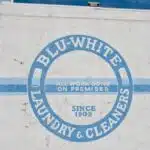

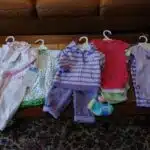



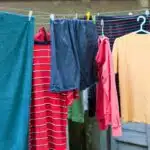
![How To Wash And Care For White Clothes 20 The only genuine borax soap cleanses hygienically saves the clothes and hands. 20 Mule-Team brand Boraxo white laundry soap [front]](https://green-life.blog/wp-content/uploads/2023/05/YDXLLCovnOjq-150x150.jpg.webp)


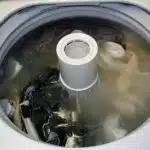
![How To Remove Perfume Odors From Clothes 24 For pungency, strength, durability and delicacy of odor. Read's Grand Duchess Cologne. [back]](https://green-life.blog/wp-content/uploads/2023/05/b-myfoHrx-jq-150x150.jpg.webp)
